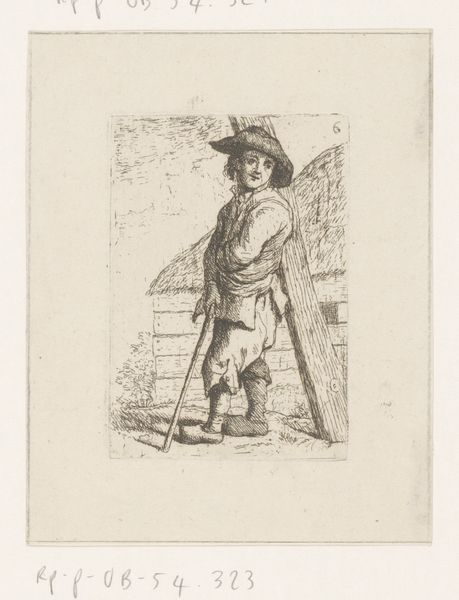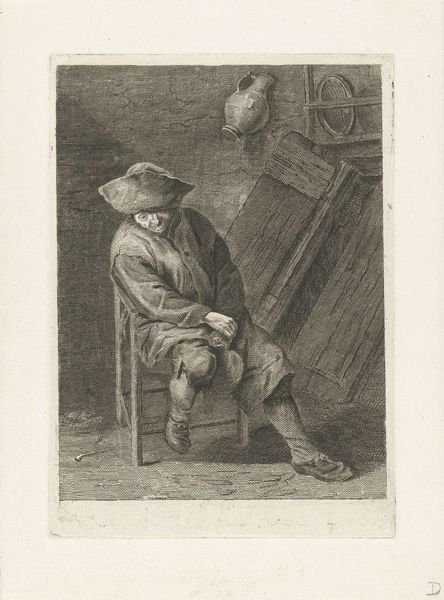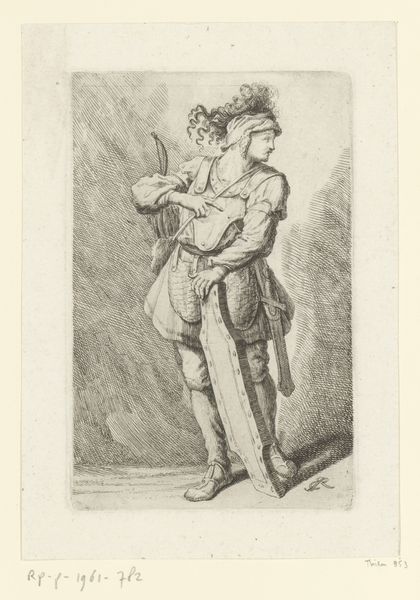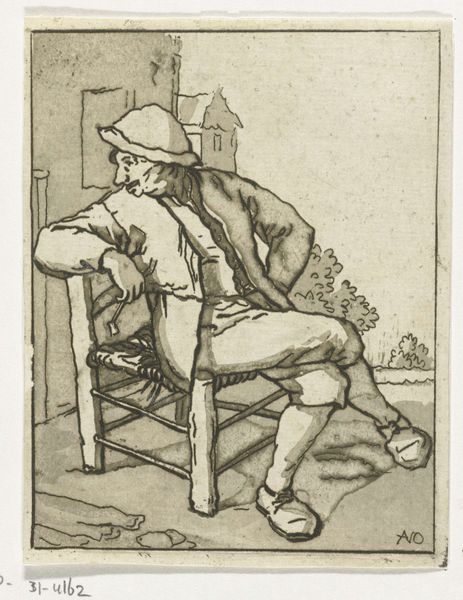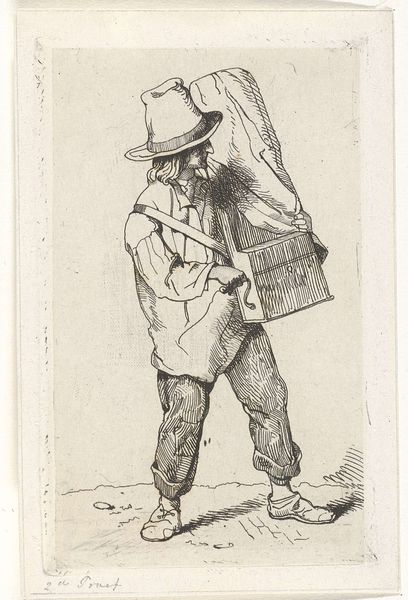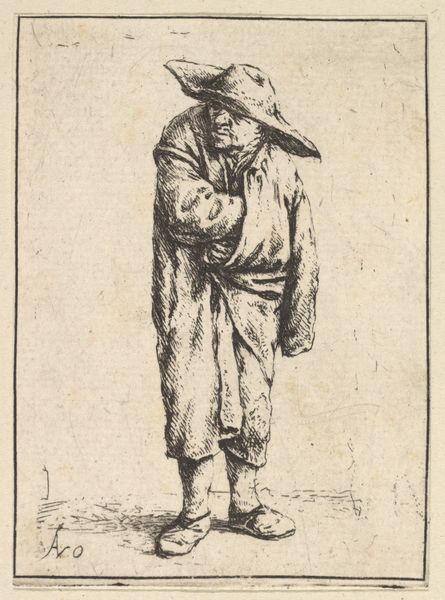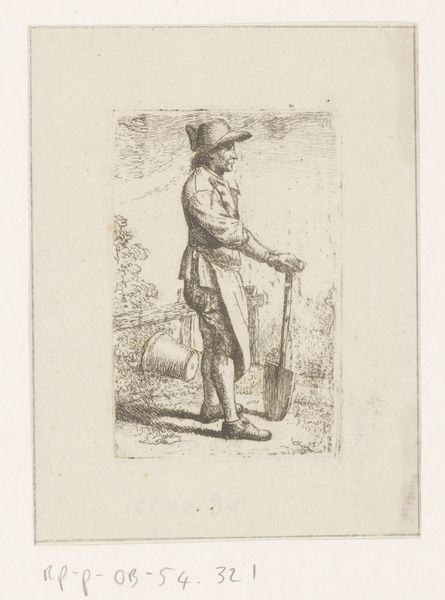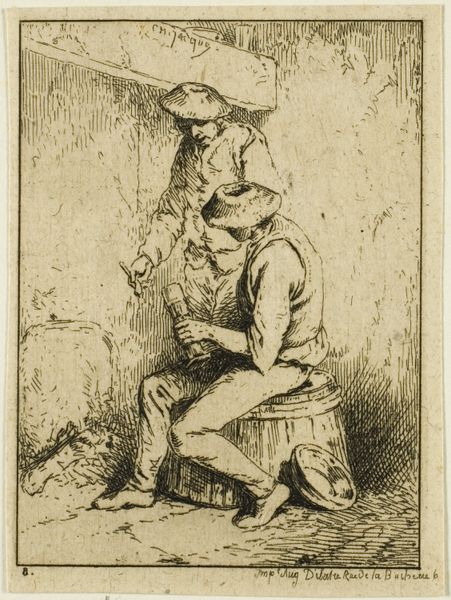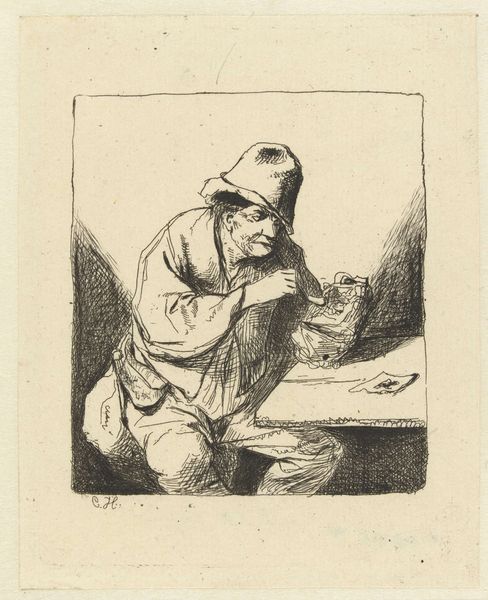
drawing, etching
#
portrait
#
drawing
#
dutch-golden-age
#
etching
#
genre-painting
Dimensions: height 84 mm, width 59 mm
Copyright: Rijks Museum: Open Domain
Curator: Here we have Hendrik Willem Schweickhardt’s etching, "Drinking Farmer," which experts date roughly between 1756 and 1797. The Rijksmuseum holds this piece in its collection. Editor: My first impression is of quiet fatigue. The figure’s slumped posture and the muted tones convey a sense of weariness. Curator: The image certainly presents a trope we see often in Dutch Golden Age art—that of the lower classes in everyday moments. Considering the socio-economic landscape of the time, it may offer a critical lens on rural life. Was it glorifying labor, or was it offering a commentary? Editor: I find the symbols fascinating here. The farmer, the tankard, and even the simple barrel he sits upon - all become potent cultural shorthand. The tankard symbolizes camaraderie and release, perhaps even escape. The barrel situates him geographically; his link to labor, soil and harvest. Curator: Yes, but it’s essential to avoid romanticizing his situation. The “drinking farmer” could be interpreted as commentary on class division. Is it meant to be a lighthearted depiction or a critique of the peasant class in Dutch society at that moment in history? What do the implications are of him relaxing on the job when there were people relying on his work. Editor: That may very well be the case. I note the slight shadow over his eyes cast by the hat, suggestive of the hardship that farmers had to deal with at that time, to imply a veiled melancholy—it could represent the weight of expectations, not just an individual's tiredness. The composition certainly plays into this reading; the figure seems compressed and slightly overshadowed by the structure behind him. Curator: Looking at it now, from a 21st-century perspective, I am intrigued by this work's social message, particularly on contemporary social justice concerns, perhaps gender expectations. If that drinking farmer were instead a female figure, that image could provoke an entirely different conversation, could it not? It does seem the social contexts are central here in a reading of this etching. Editor: That shift highlights how the symbols would fundamentally change their implications— fascinating! Even with the limitations of etching, Schweickhardt has created this scene ripe with possibilities for layered symbolic meaning. The more we probe, the more it resonates! Curator: Absolutely. The image speaks to history, but it also speaks to now, forcing us to consider what we bring to the viewing, what meaning *we* attach to the symbol, the narrative. Editor: I couldn't agree more. Art such as Schweickhardt's reveals that symbols are anything but fixed, showing, again and again, that what an object carries forward through time depends so much on where it's carried and by whom.
Comments
No comments
Be the first to comment and join the conversation on the ultimate creative platform.


